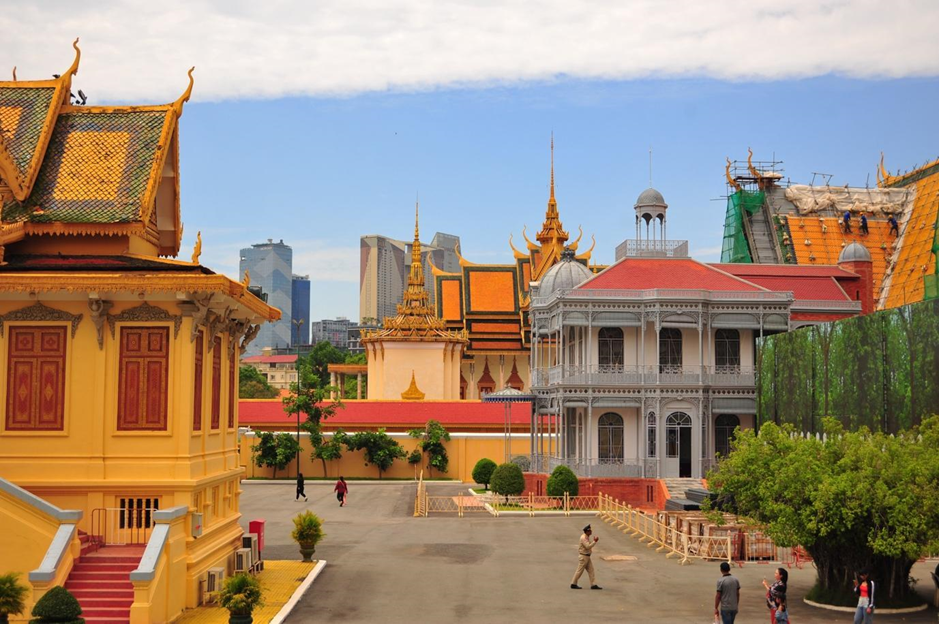The layers of memory: when Rith Bonrotanak unveils The Particles in Phnom Penh
- Editorial team

- Aug 25
- 3 min read
The exhibition The Particles by Cambodian artist Rith Bonrotanak, currently on display in Phnom Penh, is not merely a presentation of plastic objects and visual forms. It becomes a sensitive archaeology, where each fragment tells the story of a country and the quest of an individual.

Between heritage and reinvention
Rith Bonrotanak belongs to a rising generation of Cambodian artists who are questioning identity in a country still marked by historical upheavals. His work draws on the remnants of everyday life, the materiality of ancient documents, revisited traditional symbols, and a contemporary aesthetic that engages with universal references.
The Particles thus stands as a metaphor: there is no monolithic memory, but a constellation of small particles that, when brought together, form a coherent narrative.
The artist explores this granularity of cultural heritage by cutting, superimposing and recomposing visual layers. Each piece seems both autonomous and part of a larger whole, like a fragment of cultural DNA brought to light.
Materiality as language
Bonrotanak's approach is distinguished by his meticulous use of heterogeneous materials. Paper, fabric, found documents, photographic elements and pictorial interventions intersect on his canvases. These earthy materials are transformed into surfaces for exploration: texture becomes narrative, tears evoke fragility, transparency suggests loss.
Rather than simple collage, the artist invents a complex visual language in which each element is a particle of history. Some fragments recall the delicacy of ancient manuscripts or Cambodian religious iconography, while others refer to a contemporary, almost scientific aesthetic, evoking diagrams and maps.
Multiple heritages, intersecting perspectives
This exhibition is not just about contemplating the formal beauty of the work, but also about reflecting on national and personal memory. Modern Cambodia is riven by tensions: how can it preserve its spiritual and artistic heritage while opening up to new global dynamics?

Rith Bonrotanak offers a response that is neither nostalgic nor disconnected from the future: layer by layer, he reinscribes Khmer identity into a contemporary narrative. His works also capture the attention of an international audience. European and Asian visitors observing these particles find universal resonances: the question of memory, erasure and reconstruction is part of every history.
A new voice on the contemporary Cambodian scene
In recent years, the art scene in Phnom Penh has established itself as a fertile ground for experimentation. Alongside more established figures, a younger generation is taking up the baton, reformulating the collective memory. In this context, Bonrotanak stands out as a unique voice: his formal rigour, sensitivity to materials and conceptual depth testify to his remarkable artistic maturity.
Her exhibition The Particles is not only an individual presentation, but also part of a broader dialogue: that of a Cambodia questioning its painful past in order to better imagine its future.
A sensitive immersion
Visitors to the exhibition enter a space that resembles a living map. Moving between the works, the eye picks up tiny details – faded writing, a fragile border, a colour emerging from the past – like so many reminiscences.
The notion of ‘particle’ is embodied in the experience itself: each visual element, each gesture of the artist calls to be connected to the whole.
The result is a meditative atmosphere. The viewer is not just an observer, but an actor: they recompose the mosaic presented by the artist in their own mind.
An invitation to reinvent the collective narrative
This work reminds us that heritage should not be locked away in a display case. When memory is frozen, it becomes fossilised. In Bonrotanak's work, on the contrary, it breathes and transforms into creative energy. Its particles symbolise the vitality of a country which, while bearing its wounds, has chosen the path of reinvention.
In this sense, The Particles offers more than an exhibition: it is a visual meditation on memory, the passage of time and the human capacity to rebuild with poetry from fragments.
On display at the Rosewood Phnom Penh gallery until 10 October 2025







Comments